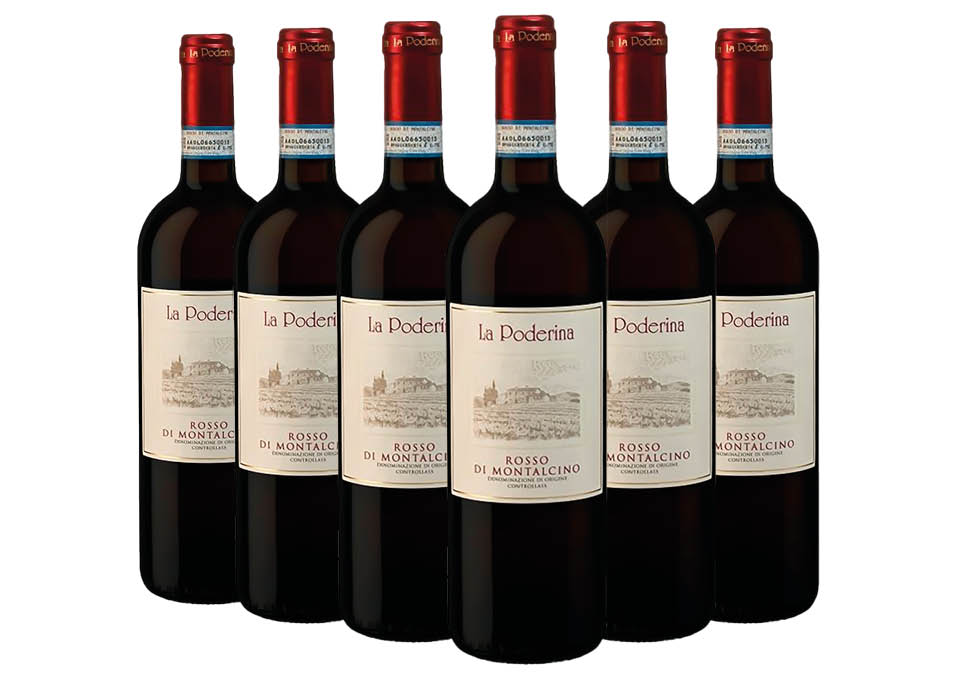Sangiovese
In addition to being the symbol of Tuscany for wine, Sangiovese is the most widespread grape variety in Italy today with almost 72,000 hectares of vineyards. A massive presence justified by the great adaptability of Sangiovese and by enviable organoleptic capacities, perfect for the creation of pure wines or blends of great value. This is the case in which Sangiovese appears in appellations such as Carmignano, Rosso Piceno , Rosso Conero, Chianti, Brunello di Montalcino, Vino Nobile di Montepulciano, Morellino di Scansano, Sangiovese di Romagna. Today, however, Sangiovese is diversified into many clones, which can be identified in two large groups: Sangiovese Grosso ( Brunello di Montalcino, Prugnolo Gentile di Montepulciano, Sangiovese Grosso di Lamole, Sangiovese Romagnolo) and Sangiovese Piccolo. Sangiovese remains an extremely adaptable grape and capable of acclimating itself to very different pedoclimatic conditions, always guaranteeing the creation of distinctly territorial wines.
With its origins for a long time shrouded in mystery, Sangiovese is today considered, also thanks to the analysis of its DNA, a probably spontaneous cross between Ciliegiolo and a vine from Southern Italy: the Calabrese di Montenuovo. Sangiovese prefers sunny places with a cool and breezy climate, while it becomes expressive if grown on poor soils, rich in skeleton and with a good percentage of limestone. Sangiovese can thus be counted as a gritty and impetuous wine, with marked tannins, a marked acidity, medium body and great concentration. Its versatility provides, in the case of Chianti Classico, for example, a basic version, a Riserva and a Gran Selezione, all suitable for making Sangiovese's response to different ripening periods known. However, the generic notes on the bright ruby red color, the characteristic aromas of cherry, violet, morello cherry, blood orange and ripe red fruit remain valid. It produces ample wines on the palate, with medium or full body, with a pronounced and moderately reduced tannic presence even in the most worked versions, as well as being able to ensure good freshness and aromatic persistence.
Buy Sangiovese
For those who love wine and retain a true passion for Italian wine, Sangiovese is undoubtedly one of the most authentic expressions of the territoriality of the Peninsula. Buying Sangiovese online means first of all knowing its chosen territory, Tuscany, which has been successfully growing this variety for hundreds of years, so much so that it has attracted great public attention both towards the blend and the food and wine tourism that affects many areas of the region. . Another reason to buy Sangiovese is the fact that it is suitable both as a table wine and as a meditation wine: versatile and authentic, capable of reserving many surprises and surprising despite its recognizable identity. In summary: buying Sangiovese online means owning one of the treasures that the world envies the Italy of wine.
What are the Sangiovese varieties?
If we analyze the types of Sangiovese grown in Italy, we realize that under the genetic profile there are some differences that make it possible to place different clones in the same family, i.e. plants that retain a genetic material similar but not identical to the plant of origin. In the case of the famous Sangiovese B-Bs 11 clone we are faced with a selection of Sangiovese that has made the history of Brunello di Montalcino with Biondi Santi. Naturally, the possibility of creating clones by companies, as well as their subsequent registration in the National Register of Varieties, must contemplate the real peculiarity of the clone reared in terms of resistance to diseases and adaptation to the terroir. In the particular case of Tuscany, it seems that the weaknesses of Sangiovese cultivated up to the 70s of the last century had also contributed to the birth of the Super Tuscans, in which the improvement of international blends would have corrected the improper properties of Sangiovese and pushed towards investment in clonal selection.
What is the characteristic flavor of Sangiovese?
The organoleptic recognition of Sangiovese largely depends on a distinct and easily traceable flavor. The characteristic flavor of Sangiovese includes blood orange, violet, cherry, ripe red fruits, but also tomato, licorice and balsamic notes which, combined together, determine a structured palate, with pronounced acidity that gives tension and strength, while gradually releasing hints of green and refreshing notes such as oregano.
Where is the Sangiovese grape grown?
There are many regions where the Sangiovese grape is cultivated and widely spread. These include Tuscany, Marche, Lazio, Emilia-Romagna, while beyond the national borders Sangiovese is grown in Corsica, California, Argentina and Australia.


















